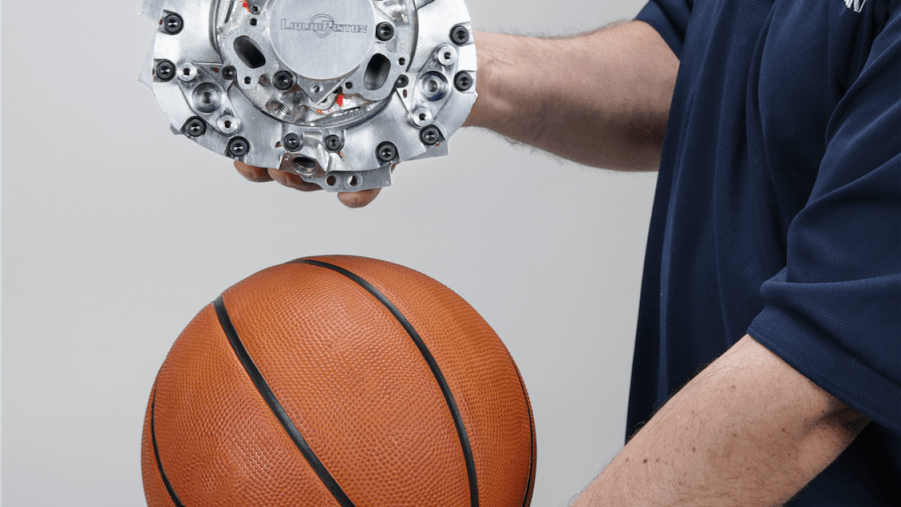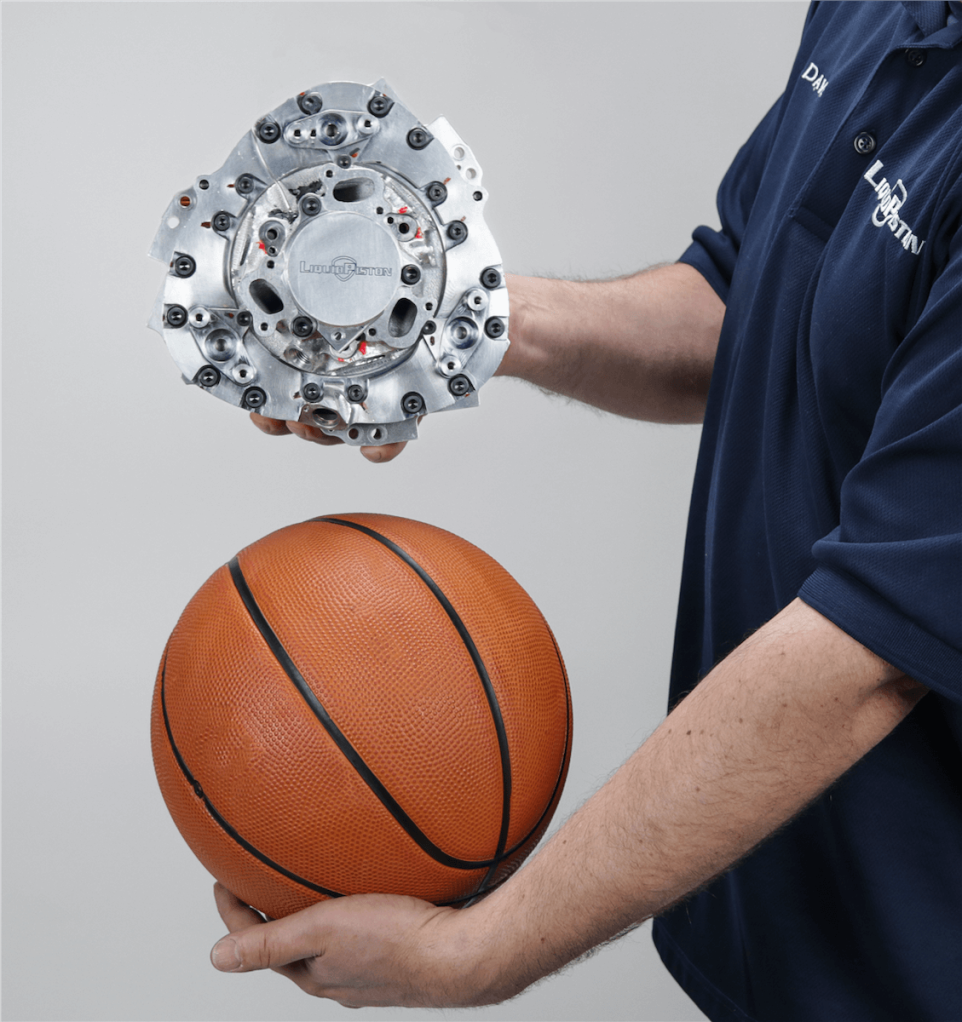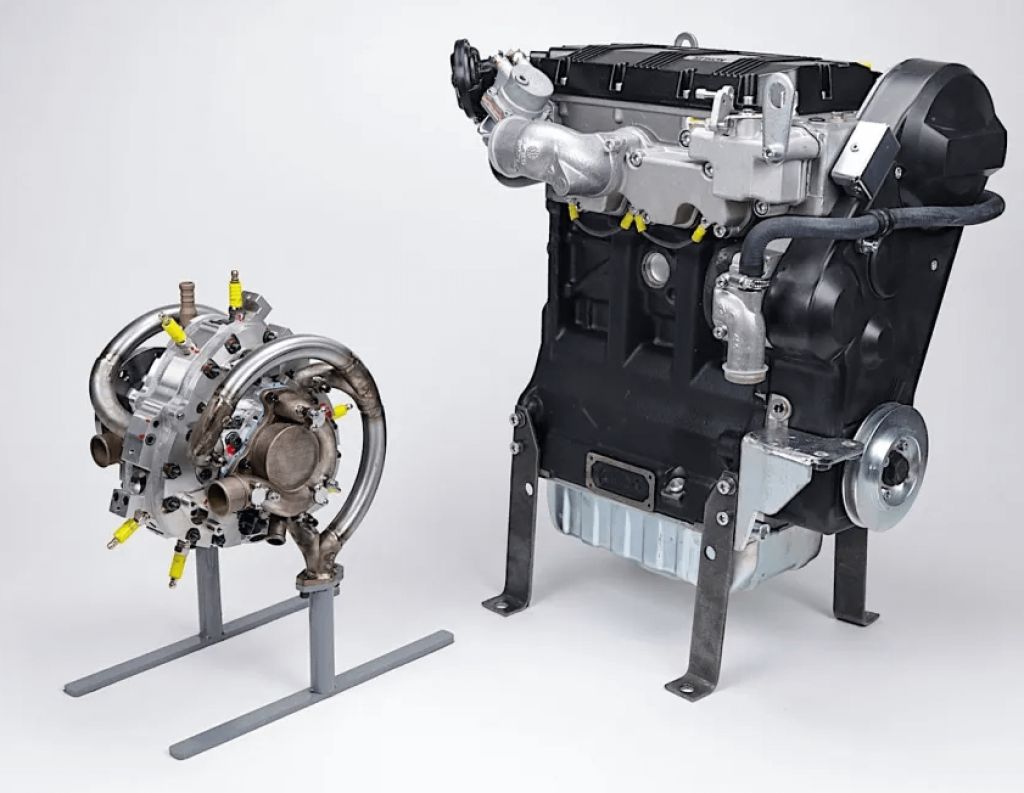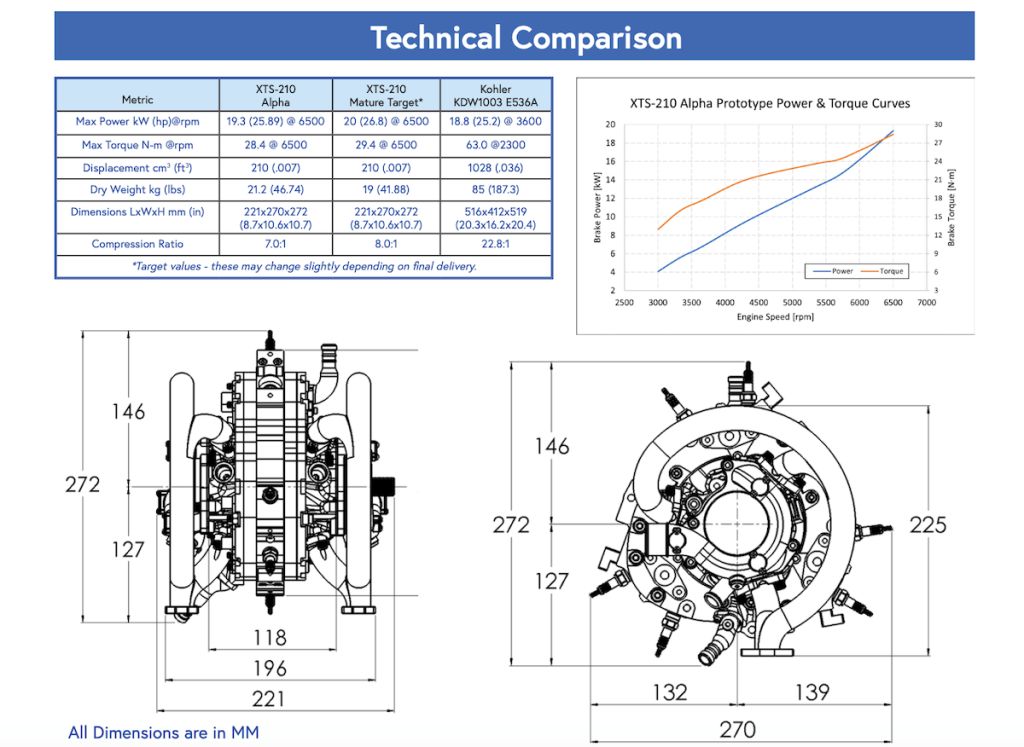
World’s First Basketball-Sized Naturally-Aspirated Rotary Diesel Engine
This is the LiquidPiston XTS-210 liquid-cooled naturally-aspirated rotary diesel engine with only two moving parts. Right now, it is under development for the U.S. Army for use in various drones, as well as other small planes, and for sea and land vehicles, too. The XTS-210 can also be an auxiliary power supply. And yes, it is the size of a basketball.
How does the rotary diesel engine work?

The Army is also interested in the engine for the possibility of it being scaled up for many other applications. But the XTS-210 is not exclusive to the Army, as it will also be available to the general public at some point in the future.
The supercharged engine is a two-stroke, with six combustion episodes per single revolution. What revolves is the rotor and the shaft it is attached to, which are its only moving parts. That many combustion events help the engine run very smoothly.
How much power does the rotary diesel engine have?
It is 210cc that delivers 25 hp. While 25 hp is not a ton of grunt, there are plenty of applications for it as is. But the potential to scale up offers the capability to create much more power from a much smaller engine size. LiquidPiston has made variants with outputs of 4 hp up to 70 hp so far.
As it currently stands, a diesel engine making similar power will have to be 80% larger than the XTS-210. So the 42 lb basketball has five times greater power density and specific power over a piston diesel engine. That equates to 1.5 hp per pound. Though configured for diesel fuel, it will also be compatible with gasoline, hydrogen, and propane.
Aren’t rotary engines dirty and have poor gas mileage?

“So basically the XTS-210 solves the key challenges the old rotaries had with combustion and with oiling,” CEO Alec Schkolnik told NewAtlas in 2020. “Those oiling challenges caused both durability issues and emissions problems. By making those components stationary, we solve the challenges of the old rotary. And we also upgraded its cycle to give it much higher efficiency.”
One of the reasons that Mazda no longer manufactures rotary Wankel engines is because of stiffening emissions laws and reliability issues. As designed, the Mazda rotary engine was fairly dirty, and also not especially great for gas mileage. So this new take on the Wankel engine could breathe new life into the genre.
Why is the U.S. Army investing in the technology?

All of its different configurations are what caught the Army’s eye. It’s looking for power plants that drink 30% less fuel than current gasoline engines. And it also wants a diesel engine that is much smaller and lighter than current engines, with the same amount of power. It has awarded the Bloomfield, Connecticut company $9 million to fulfill those requirements.
LiquidPiston sees the rotary engine’s initial use in hybrid systems for various vehicles. While in development since 2010, it appears that the company is on the verge of something really exciting with a modern take on the 70-year-old Wankel design.



